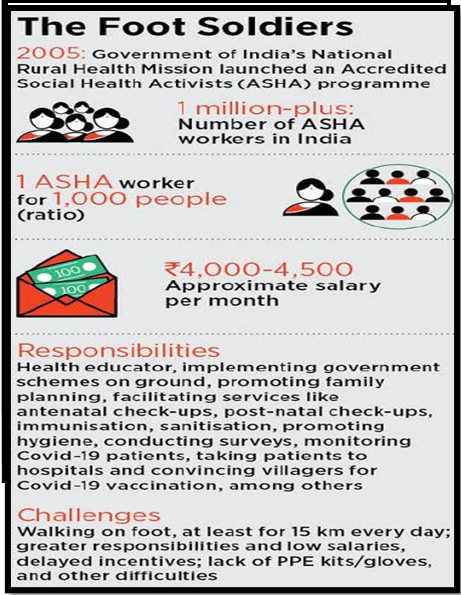THE WOMEN OF ASHA: OVERWORKED, UNDERPAID AND ON THE EDGE OF BREAKDOWN
Why in the news?
- ASHA workers, crucial to India’s health schemes, face a triple burden—managing home, community, and health centers.
- Their demanding schedule leads to inadequate nutrition, irregular meals, and insufficient sleep, putting them at risk of health issues.
About ASHA’s Role and Responsibilities:
- Purpose :ASHA (Accredited Social Health Activist) is a community-level worker designed to be a health care facilitator and service provider.
- Mission :
- ASHA workers deliver essential services in maternal and child health, family planning, and contribute significantly to the National Disease Control Programme.
- Vocation :
- All ASHA workers, predominantly women, serve populations, with a standard ratio of “1 ASHA per 1000 population” in most areas.
- Adjustments to this norm are made in tribal, hilly, and desert areas based on the workload, allowing flexibility like “1 ASHA per habitation.”
| About Evolution and Expansion of the ASHA Program:
· The ASHA program was initiated in 2005-06 under the National Rural Health Mission, primarily focusing on rural areas. · Later, with the inception of the National Urban Health Mission in 2013, the ASHA program expanded its reach to urban settings. · The ASHA program has evolved into the world’s largest community health worker initiative, recognized as a critical contribution to promoting people’s active participation in health matters. |




